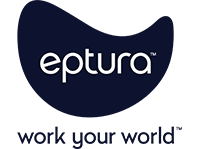
By Wednesday morning, the office hums with energy. Every meeting room fills, every desk buzzes, and collaboration hits its stride. But by Friday, that energy drops off. The chatter fades, desks sit empty, and the balance between flexibility and efficiency slips again.
The mid-week mountain — a surge in attendance between Tuesday and Thursday — continues to shape hybrid work patterns worldwide. According to Eptura’s Workplace Index 2025, desk-bookings peak mid-week across all regions, leaving Mondays and Fridays quiet.
Leaders can’t flatten this curve by forcing people back to their desks. They do it by creating visibility, empowering choice, and connecting data. When organizations deploy integrated, AI-powered workplace technology, they make collaboration happen naturally — no matter what day it is.
Key takeaways
- The mid-week mountain is a data challenge, not a people problem. When leaders unify workplace data, they gain the visibility needed to balance attendance and collaboration naturally
- Integrated, AI-powered tools transform coordination into automation. By connecting booking, analytics, and collaboration systems, organizations remove bottlenecks and keep productivity steady across the entire week
- Connected worktech creates measurable impact. Companies that align people, places, and technology boost attendance visibility by up to 180%, improve space efficiency, and strengthen employee experience.
What is the “mid-week mountain”?
The mid-week mountain happens when hybrid employees crowd the office mid-week and stay home at the edges. Eptura’s research identifies this imbalance as one of 2025’s top three opportunities for workplace leaders, alongside optimizing real estate and extending asset lifecycles.
This rhythm pushes resources to their limits.
- Facilities teams scramble mid-week to manage energy, catering, and cleaning demands
- Real-estate managers struggle to predict space-needs
- Employees show up ready to collaborate, only to find their teammates remote
Productivity peaks and drops like a roller-coaster, not because people aren’t working hard, but because the systems around them don’t sync up.
When organizations smooth that pattern, they reclaim control over mid-week productivity in the workplace. They use insight, not enforcement, to guide when and how teams connect.
Identifying collaboration blockers
Eptura’s research shows that 22 % of workplace-leaders list leveling attendance as their top challenge. The biggest obstacle isn’t employee behavior — it’s fragmented technology.
Most organizations still juggle an average of 17 standalone worktech solutions, with only 4% operating on a unified platform. Each system manages a different part of the workday — from desk-booking and visitor management to facilities scheduling and analytics — but few communicate.
This disconnect leaves leaders guessing. They can’t see who’s onsite, when collaboration peaks, or how spaces perform. Facilities teams waste time compiling reports across multiple dashboards, while employees lose time chasing available rooms. The result is a cycle of overcrowding mid-week and under-use on the fringes — a drain on collaboration efficiency and productivity.
How streamlined tools flatten the mountain
Organizations flatten the mid-week mountain by connecting every piece of the workplace experience into one intelligent ecosystem. With platforms like Eptura Workplace, leaders replace guess-work with predictive insight and automation.
AI-powered booking tools forecast attendance patterns and recommend balanced team-days. Employees can instantly see where colleagues plan to sit and reserve nearby desks or collaboration zones. A single booking triggers related services — IT support, catering, or visitor access — without manual coordination.
At the same time, real-time occupancy data gives facilities teams the power to adjust HVAC, lighting, and cleaning schedules dynamically. When workplace systems share data, collaboration becomes fluid. Everyone knows where to be, when to show up, and what resources to expect.
The Workplace Index shows that 40-54 % of organizations already use AI for booking, workflow integration, and collaboration-data analysis. The next step is integration — linking those AI tools into one platform that transforms daily activity into unified, data-driven operation.
Benefits across departments
When organizations streamline collaboration, every department performs better.
- Real-estate teams base planning on live attendance-data instead of static policies, reducing lease waste and right-sizing portfolios
- Facilities teams align maintenance and cleaning to real-time usage, cutting costs while improving service-quality
- IT and security teams centralize access-management and visitor-data, strengthening compliance
- HR teams use collaboration-insights to shape hybrid-policies that match how employees actually work
These cross-functional advantages are why 67 % of professional and financial-services firms have now hired a dedicated digital-workplace leader — many within the past 18 months. These leaders don’t just manage space — they orchestrate how technology enables teamwork across the entire organizations,
Metrics That Show Improvement
Organizations that integrate workplace systems see measurable gains. A financial-services company that unified its desk-booking, attendance, and collaboration-data achieved an 180 % increase in attendance-visibility, enabling managers to plan team-days with precision and respond quickly to shifting occupancy trends.
When leaders track attendance, utilization, and collaboration-data in one place, they uncover patterns of efficiency. They balance occupancy across all five days instead of three, eliminate reporting delays, and optimize energy-use around actual building demand. Every improvement compounds: smoother scheduling leads to better collaboration, which drives higher productivity and stronger culture.
As the Workplace Index concludes, companies that become more connected, more informed, and more intelligent don’t just adapt to hybrid work — they lead it.









